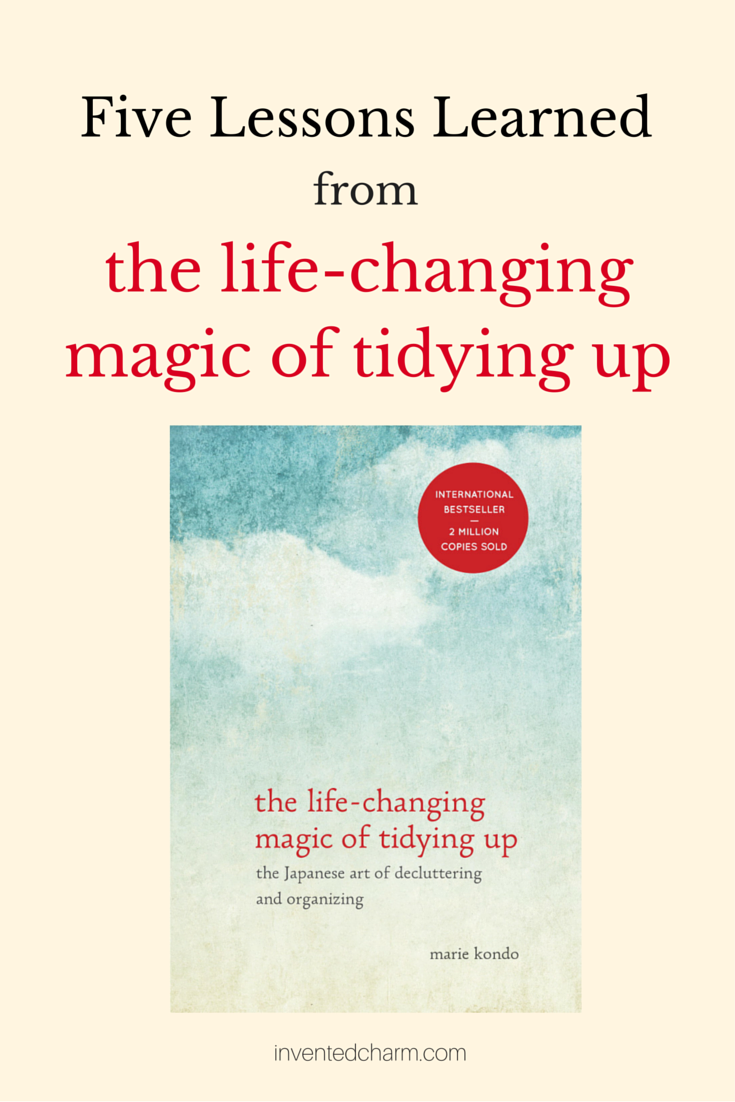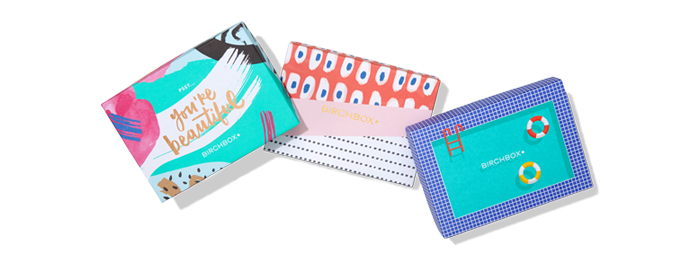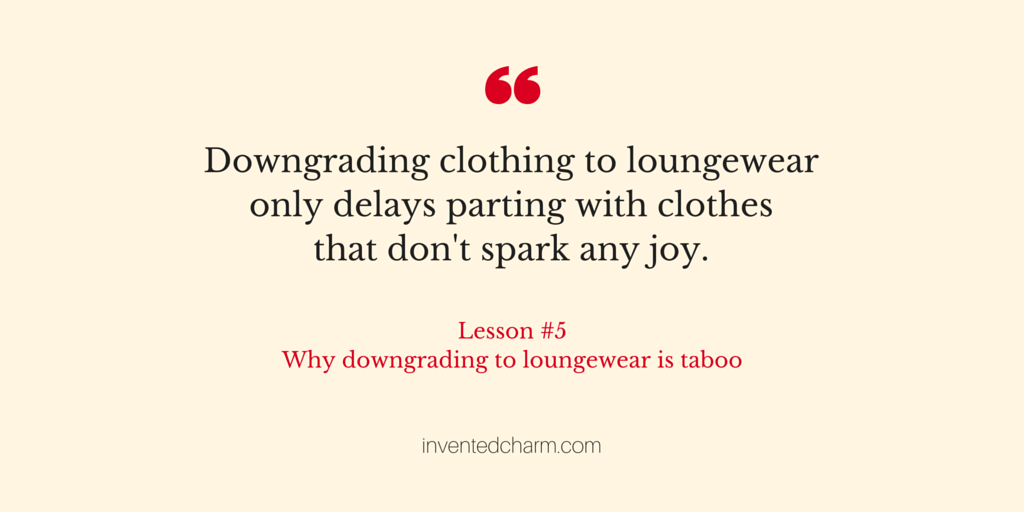
Some of the following include Amazon affiliate links and Birchbox referral links, which means that if you click on one of the links and make a purchase, I’ll receive a percentage of that sale at no cost to you or points for a referral. All thoughts and opinions are my own. For a full disclosure statement see my About page.
I read Marie Kondo’s The Life-Changing Magic of Tidying Up in December, and then in early January my husband and I began to tackle our home. We fully purged our clothes, books, and papers. We got about three-quarters way through komono, a Japanese term for miscellany, the broadest category, and we have yet to complete the tidying process with her most difficult categories—sentimental items and photos.
I know a lot of people have very strong opinions about this book, some not all positive, but this is not a full review of the book or Kondo’s process for tidying. In this post, I simply want to share my top five favorite lessons I learned and have implemented.
Keep Things Because You Love Them—Not Just Because
I have a confession to make: I used to hoard beauty products. I was a sucker for anything in a cute little bottle or fancy packaging. I almost never wanted to open these delightful things; I coveted them and felt like they needed to be saved for a traveling or a special event. Every few years I’d feel guilty and go through my toiletry collection and toss out things that had expired, some hardly touched. It left me depressed and feeling guilty about all the money I wasted. Then, after I read the section of the book about how to deal with komono, I completely changed my habits.
Marie Kondo points out that such small quantities of product have a short shelf life and it’s silly to think we will pack these items for travel because most of us don’t. Now I make it a priority to use those cute little samples immediately to figure out which ones work and toss the ones that don’t. I try out all the cute gift sets and gifts with purchase, rather than let them collect dust. When I had a Birchbox subscription, I collected all the hair products I got and gifted them to a friend. I knew I’d never use them, but I knew she would. Beauty products are my jam, and using them makes me so happy.

I corral all my small beauty products in a glass jar. They’re pretty to display, and the jar makes it easy to see everything in one place. This way, I don’t lose track of these small one offs and I use at least one of these products every day. The jar is small enough that it can also be tucked easily into a cabinet to keep the counter free of clutter.
Keep Things Out of the Bath and Kitchen Sink
For years my partner and I shared a hanging caddy to store all our products in the shower. It would get rusty or calcified and we’d end up tossing and replacing them fairly regularly. Our shower always felt cramped, the soap was soggy and seemed to disintegrate very quickly, and the tile and grout looked grimy. After reading the book, we followed Marie Kondo’s advice to keep the shower clear of products. We both only bring in what we will use for each shower, then dry the products off, and put them back in our drawers. It’s not always super convenient, but all the other annoying issues we had disappeared. Our shower looks clean and fresh, we aren’t wasting money on buying a new shower caddy every year, soap gets a chance to dry out and lasts a lot longer, the bottles aren’t calcified and slimy, and our shower stall feels so spacious now.
When I clean my kitchen, it looks tidy and clutter free. We store our sponges, kitchen rags, and scrub brushes underneath the kitchen sink using wire racks and 3M Command hooks. The whole area is clear of clutter, which is nice because counter space is limited. We even installed a sink-mounted dish soap dispenser.
The Best Way to Store Bags is in Another Bag
I used to have an entire Ikea chest of drawers devoted to purses. Just purses! I didn’t use all of them and many no longer brought me joy, so I got rid of a lot of them. Some went to charity, and others I was able to consign to make a little bit of money. Now I have just the ones I use regularly, and they’re arranged as Kondo suggests, so that several are tucked inside my large leather tote when it’s not in use. I no longer have multiple purses standing upright in dustbags, and multiple small purses stacked on top of each other taking up an entire chest of drawers. Just like Marie Kondo writes, I too was able to halve the amount of space needed to store my purses.
No Need for Commercial Storage Items
I used to think my kitchen and bathroom drawers were a mess because I couldn’t find the right containers to house my things. I had little plastic containers of all sizes, but still my drawers looked disorganized. One of Marie Kondo’s tips is using Apple product boxes and shoe boxes to organize inside drawers. I also like using my Birchbox boxes and popping the lids on for added privacy. These boxes are gorgeous and just the right size for my slim bathroom drawer. It also helps that I’ve purged so much stuff that I can actually fit my belongings inside the allotted space I have.

Downgrading to Loungewear is “Taboo”
Marie Kondo writes about how you can never reduce the volume of clothing you own if you just downgrade your pilled cardigans and dresses that don’t suit you to loungewear. She goes on to say that, “castoffs are not really loungewear at all. Calling them that merely delays parting with clothes that don’t spark any joy.”
When I read this, I had an aha moment. I used to have multiple pairs of leggings and yoga pants. Some had holes or were stretched out and those were saved just for lounging, and some were new and those were supposed to be for my daily walks. The trouble is that sometimes I’d forget and wear a pair of ugly leggings on my walk with holes in the crotch. I also got into a bad habit of wearing leggings or yoga pants all day long instead of getting dressed in regular street clothes.
It didn’t bring me joy to put on worn out yoga pants, especially when I have perfectly good ones in my drawer. It also didn’t bring me joy to wear leggings all day, every day. The answer to both of these problems was to toss my worn out clothes instead of saving them for loungewear, and creating a capsule wardrobe that brings me joy to get dressed every day.

I hope this was useful for anyone who is considering reading The Life-Changing Magic of Tidying Up. I found Marie Kondo’s advice to be incredibly inspirational in letting go of things I owned that I no longer wanted or used but couldn’t seem to part with for whatever reason. I felt stuck after years of trying to organize my house—I had bin after bin stacked in closets and cabinets. I had all but decided I’d be the neatest pack rat forever. After reading this book, and the follow up, Spark Joy, I felt empowered to make drastic changes in the way I tidied. I can pick up around the house in about thirty minutes or less because everything has a place now. My possessions have room to breathe and so do I.
Image Credits // book (featured in graphic): via Tidying Up / glass jar: Christina Toy from Invented Charm / Birchbox boxes: via Birchbox
I have read reviews of this book, and it seems like it’s not 100% for me (you will pry my books from my cold, dead hands lady). I do enjoy thoughts on minimalism, but I am not so into all the spiritual stuff she spouts in terms of our relationship with objects. However, I am glad to see you post some of the useful tools her book contains! I think there are some good ideas in there – like you should thoughtfully consider all the things you own. I just can’t only keep things that “spark joy” I mean… My baby needs diapers and I need to brush my teeth lol. Thanks for sharing! I’ll have to check out your wardrobe post. My wardrobe needs a major culling. I keep too many things because I have a hard time letting go of the fact that I spent money but didn’t get enough use out of it (which is why baby clothes are so hard for me too!!).
I think I will do another post do dispel some of the misconstrued ideas about her process (particularly on books), and her spiritual beliefs (based on Shintoism). I think those two things have gotten unfair attention since they are not prominent parts of the book. Things that spark joy don’t have to be so amazing they make us want to dance and sing, but they should be either beautiful or useful or both. If we set the bar any lower, we end up with a bunch of clutter.
I cave! I totally just bought this book (hopefully off of your link.. I switched to the Kindle version for it, but hopefully it still applied?). Watching your whole journey through this process has been amazing, and if I can do even a fraction of as well with it, it’s worth a shot! Out of curiosity, does the book talk about, and/or do you have experience with (I know Nick read the book too and got on board, but was it right away?), making these sorts of changes while co-habitating?
(And is it dorky if I’m excited to get to the Spark Joy book too??)
Oh that’s awesome! Gah, I need to catch up with you! *all the emojis*
The book does talk about how you can’t make someone else tidy up with you and it’s discouraged to do it in front of family because someone might talk you out of throwing something away. I am going to to do a follow up post though, because I left out the bit where Nick was the one that bought the book for himself first and I was so intrigued that I could barely wait to get my hands on it. I think if you start doing a big tidy of your space, any cohabitants can be inspired to do the same. I like that the book is non-judgmental. It’s not saying you’re a bad person if you don’t tidy up, and for me that helped. For once I feel like I’m not the mess in our house. I’ve taken ownership of my problem areas and I had the tools this time around to make a permanent change.